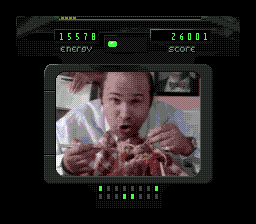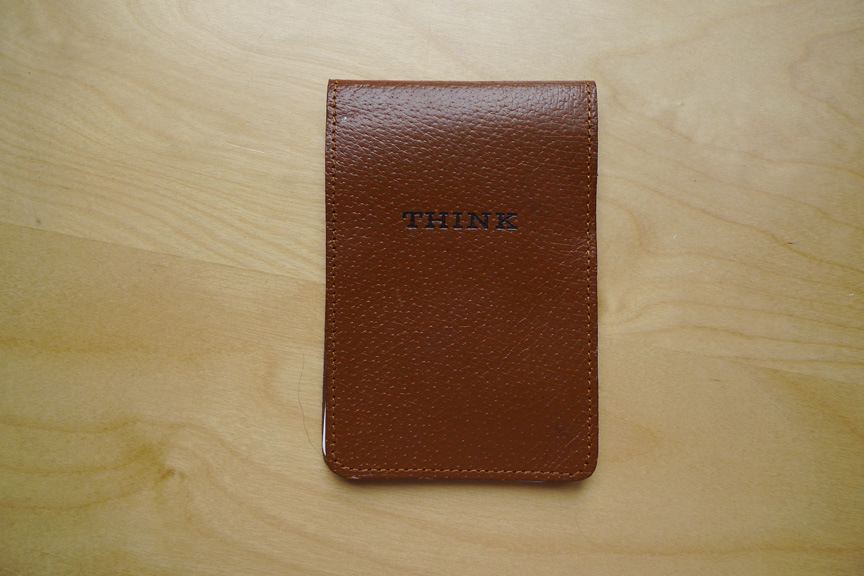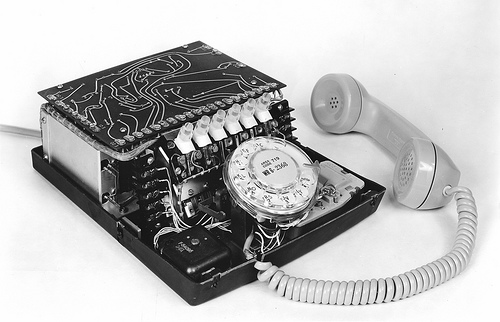Links and write-ups about beautiful things from around the web!
-
Phillip Torrone Rides the Square Wheeled Tricycle
(video no longer available)
Phillip Torrone rides the square-wheeled tricycle from the Math Midway, a traveling exhibition of mathematics. Figuring out what kind of catenary curves would be needed for differently shaped wheels is a branch of mathematics that I’m happy exists (as far as I know the problem dates back on some level to the 1960s, but for a good recent illustration of the math involved, check out this PDF from a St. Norbert College mathematical modeling class).
(Via Make)
-
NEMO
 Early 1990’s gamers all surely remember the schlocky FMV games like Sewer Shark (sadly directed by VFX legend John Dykstra!), Night Trap (widely attacked in the U.S. Senate by Joe Lieberman!!), and Double Switch (starring Corey Haim and Debbie Harry!!!), and probably even get a cold chill whenever the name Digital Pictures comes up. Turgid, not much fun, and costing in the millions to produce, they were supposed to revolutionize the home entertainment business (anyone remember the $700 Philips CD-i?).
Early 1990’s gamers all surely remember the schlocky FMV games like Sewer Shark (sadly directed by VFX legend John Dykstra!), Night Trap (widely attacked in the U.S. Senate by Joe Lieberman!!), and Double Switch (starring Corey Haim and Debbie Harry!!!), and probably even get a cold chill whenever the name Digital Pictures comes up. Turgid, not much fun, and costing in the millions to produce, they were supposed to revolutionize the home entertainment business (anyone remember the $700 Philips CD-i?).The side of the story that I hadn’t heard until now is that those were actually ports by the time the Sega CD and 3DO came around. Originally those games were created for a late 1980’s Nolan Bushnell-produced VHS (!!!) system called the Control-Vision, aka the NEMO (short for “Never Ever Mention Outside”, an appropriate moniker). Special circuitry in the system would allow games to be encoded onto multi-track VHS tape, jumping quickly (?) between segments as players push the control buttons.
Going up against the then-$100 NES, and with a competing video tape game system that already failed on the market (World of Wonder’s Action Max), Hasbro wisely pulled the plug on the NEMO. All of the expensive FMV footage that was shot would only make the light of day a few years later, squeezed down to a resolution of 256×224 pixels, mercilessly dithered down to 64 colors at a time.
-
The Original IBM (pen-and-paper) Thinkpad

The original IBM ThinkPad, a bit of corporate pen-and-paper swag from the 1980s that later inspired the name for their long-lived laptop line.
(Via A Continuous Lean via 5cience)
-
Walkthrough
“SOUTH”
“EAST”
“OPEN WINDOW”
“ENTER HOUSE”
“WEST”
“GET THE LAMP”
“MOVE THE RUG”
“OPEN THE TRAP DOOR”“LIGHT LAMP”,“D”,“S”,“E”, “GET THE PAINTING”, “N”, “U”, “U”, “GET KNIFE AND ROPE”, “D”, “W”, “OPEN CASE”, “PUT PAINTING IN CASE”, “DROP KNIFE”, “GET SWORD”, “OPEN TRAP DOOR”, “D”, “N”, “KILL TROLL WITH SWORD”, “DROP SWORD”, “E”, “E”, “SE”, “E”, “TIE ROPE TO RAILING”, “CLIMB DOWN ROPE”, “S”, “E”, “GET COFFIN”, “W”, “S”, “PRAY”, “DOUSE LAMP”, “S”, “N”, “E”, “D” TO THE CANYON BOTTOM, “N”, “DROP COFFIN”, “OPEN COFFIN”, “GET SCEPTRE”, “WAVE SCEPTRE”, “LOOK”, “GET GOLD AND COFFIN”, “SW”, “U” TO CANYON VIEW, “NW”, “W”, “ENTER HOUSE AND OPEN BAG” “GET GARLIC”, “W”, “PUT COFFIN, SCEPTRE, AND GOLD IN CASE” “OPEN THE TRAP DOOR”, “AND LIGHT THE LAMP”.
From Walkthrough, the 2nd greatest Zork-based rap song of the past couple of years (Frontalot’s It Is Pitch Dark is still pretty ultimate). And yes, I’m very much looking forward to the upcoming Get Lamp documentary.
(Via a lot of gaming blogs…)
-
Western Electric and Bell Labs Test Equipment Gallery

A beautiful photo set of Western Electric and Bell Labs test equipment from Flickr user Marc F. Vintage telephony pr0n.
-
Fandom in Academia
Digging through academic journals from various fields I’ve found one element that they all seem to share: the occasional linking of an author’s specialized field with some element from the über-specialized world of current fan culture / pop culture. The links are often tenuous, but sometimes there’s a real gem hiding amongst the serious papers. Sometimes the research is dubious enough to appear on an academic humor blog like NCBI ROFL, but usually the research lacks the clout or audacity needed to garner an Ig Nobel Prize. For example, here are two papers from this week’s publication listings (I’ll add more if I find them this week):
- Harry Potter’s Headaches, published in Headache: The Journal of Head and Face Pain – an attempt to categorize the titular boy wizard’s symptoms using the “Muggle” International Classification of Headache Disorders, 2nd edition (ICHD-II). I’m pretty sure they’re having a good time with this one, thankfully. (Via NCBI ROFL)
- Harry Potter and the (Re)Order of the Artists: Are We Muggles or Goblins? (.PDF), published in the Oregon Law Review. A 32-page analysis of the property rights and droit moral issues presented in Harry Potter and the Deathly Hallows, in particular regards to the sword that Harry promises to Griphook the goblin. Literature does act as a good gateway to thinking about legal and ethical problems, so I won’t knock this one. (Via the Tarlton Law Library’s Current Copyright Legal Literature)
-
A Meditation on Sierra AGI vs. Lucasfilm Games
From a short essay by elTee on Mixnmojo considering “The Secret of Monkey Island” as a satire of and rebuke to Sierra’s adventure games, a major shift in the genre that would signal the end of the (strangely death-obsessed) Quest series:
Did any of you ever play Police Quest? It was an interesting game because it actually expected you to act like a real police officer. I didn’t realise that cops had to perform a 360-degree vehicle check every morning (duh) and so when I drove away, I got a flat tyre outside of the station. If that were LucasFilm Games’ The Secret of The Death Angel, I’d probably be able to get out of the car and change the tyre, but not so in Police Quest with its grimly predictable ‘game over’. But in a weird way, it was more annoying when I finally managed to get that first day at work under my belt and it was time to get changed and head home. There’s a locker room, and I realise I have no idea which one of the lockers is mine – and then I further realise that the game isn’t going to help me out because of the logic that… the character knows which locker it is.
The Secret of Monkey Island throws that kind of crap out from the opening line. Guybrush doesn’t know shit, and that puts him and us on a level playing field. It’s subtle and incredibly liberating.
Very true. You could learn a lot about storytelling and game writing, good and bad, by studying the early adventure games.
-
デカリス Giant Tetris from Sega Via Arcade

デカリス [Giant] Tetris, from Sega.
(Via Arcade Heroes)
-
Ergotopography
“The art of writing symbols that say where you’re working from.” The original was WFH, Working From Home. Following that pattern, then, you might get:
WF(O<-<)
Working from a bathWFgl___/
Working from a boat (with an outboard motor)WF§-__/
Working from a boat (with a more serious motor)“WF ”
Working from spaceWF=====
Working in a linear accelerator…
(Via New Scientist and Language Log, which has an interesting discussion of trying to work out what the best neologism for these ASCII art variations should be)
-
Cho Chabudai Gaeshi — Flip the Table
Taito’s new Cho Chabudai Gaeshi, a game based on a literal interpretation of the Japanese idiom “flip the table” (chabudai gaeshi). It gladdens my heart to see new weird games being made for the arcade. At least it’s easier to relate to than Boong-Ga Boong-Ga.
As one commenter on Kotaku notes, “If they localized this in the US it’d have to be called ‘F*ck This’”
(Via Offworld)
